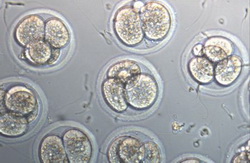Normally, a woman only produces one egg in every menstrual cycle. In order to maximize the chances of having good quality eggs, stimulation IVF is given to the woman. These stimulating drugs are used to encourage ovaries to produce more follicles and eggs.

Common Protocols for Ovarian Stimulation IVF
Luteal Lupron Protocols
Luteal Lupron Protocol is also known as down regulation or mid Luteal Lupron. This type of protocol is mostly used in the United States for it has better success rates compared to the other protocols. Lupron medications affect pituitary glands in producing luteal hormone surge. Luteal hormones are hormones that surge ovulation and development of the corpus luteum.
Antagonist Protocols
Antagonist protocol uses antagonist medications of gonadotropin releasing hormone or GnRH. It has the same effect as Lupron but works differently as it competes with the body's natural GnRH molecules in the binding site at the pituitary gland.
Flare and Micro Flare Protocols
Flare and micro flare protocols are used in situations when the woman has low response to ovarian stimulation which could be due to reasons of old age or high FSH level which indicates low ovarian reserve. Doctors use the same type of medication with luteal Lupron.
Minimal Stimulation IVF
Mini IVF or minimal stimulation IVF is designed to only give minimal dosage of stimulating drugs to IVF patients. Though with low dosage, its main purpose is to produce few but high quality eggs. Minimal stimulation IVF protocols involve giving Clomid at day 3 to 5 then followed with FSH on day 8 until follicles reach their maturity. The cost is lower compared to using regular stimulating medications.
Side Effects of Stimulating Drugs
- Most women who undergo stimulating drugs are at high risk of developing OHSS or ovarian hyper stimulation syndrome. OHSS is a complication formed when too much stimulating drugs irritate the ovaries resulting to enlargement or swelling. OHSS symptoms range from mild to severe.
- Headaches, mood swings, nausea, blurred vision, cramping, fatigue, hot flashes, bruising or soreness in the injection site, vaginal dryness, and abdominal pain may also be present.
- Women taking fertility drugs are at risk of having multiple pregnancies. Almost 50% of women with IVF stimulating drugs result to multiple pregnancies. Multiple pregnancies are not good both for the mother and the babies in the womb. Their lives are at risk as babies could either be born premature and sickly or lifeless.
- Some studies reveal that taking fertility drugs like Clomid increases the risk of ovarian cancer among women.
- Furthermore, studies show that stimulating drugs increase the risk of developing breast cancer and uterine cancer. But these studies have not yet proven any direct connection between developing cancer and taking fertility drugs.
Success Rate with Stimulation IVF
Success rates of women who undergo IVF stimulation vary depending on the woman's age and the dosage of stimulating drugs. It is also believed that the more eggs retrieved, the higher the chances of conceiving.
IVF stimulating drugs have their own side effects and fertility drugs contribute to the woman's emotional and physical exhaustion. It is best to discuss with the doctor any concerns and questions related to stimulation IVF.
